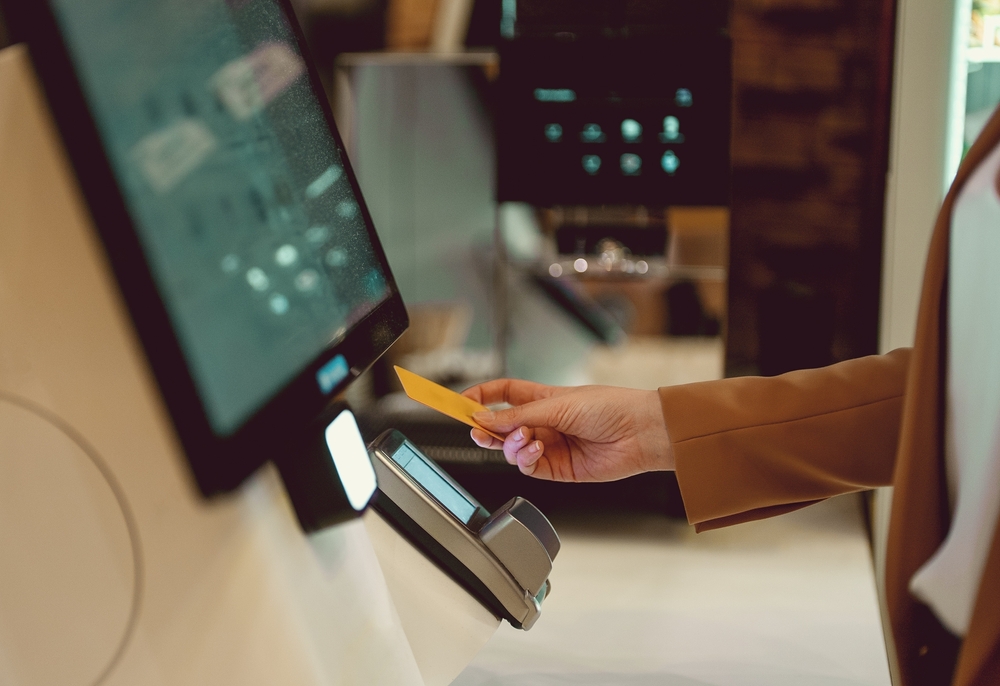Every industry has to take the rough with the smooth, and no technology is perfect. Recently, kiosks have been attracting the kind of attention no one wants from the media, who excel in picking up on a negative and whipping it up into something mildly sensational.
The issue in this case? Self-service checkouts facilitate shoplifting. For example, mainstream media outlets including the BBC jumped on a study from the US that found 69% of consumers believe self-checkout makes shoplifting easier, and 15% admit to doing so.
Another report cited by Business Insider concluded that thieves are 21 times more likely to deceive a self-service machine than they are a human.
We’ll gloss over the small sample sizes in both of these studies, and the fact that, in the BBC’s case, the figures were cited in the context of a broader kiosk-bashing article (we may return to that in a future blog).
Let’s accept what the figures are suggesting. That shrink rates from self-service kiosks deployed as POS points in retail are higher than anyone would like. There’s nothing controversial there.
But does that justify the conclusion that many commentators seem only to happy to be drawing? That there must be something inherently at fault with kiosk technology, and that retailers might be best served re-thinking their self-service strategies on security grounds?
Such sweeping statements might make good headlines. But they nearly always miss the detail of what’s actually going on.
Supermarket scams
Let’s start with some context. When we talk about shoplifting and kiosks, we’re not talking about soaring rates of theft in every retail outlet that decides to adopt a self-service checkout. We’re mostly talking about supermarkets.
There’s no great secret as to what goes on. We’ve all heard about the routines. Fill a basket or trolley, scan half the items, sneak the rest into a bag that’s not placed in the bagging area. Or substitute cheap items for more expensive. Either way, the idea is to use the fact that you are paying for something as cover for stealing more.
But none of these supermarket self-checkout scams should work. Whether it’s substituting cheaper items for more expensive, or so-called ‘batching’ – paying for four of an item but walking out with five – the scales in the bagging area should pick this up. That whole ‘unexpected item in the bagging area’ thing? That’s what that is for. If it’s not working, it’s because the hardware is inferior and the scales are not calibrated to be sensitive enough.
The ‘retail expert’ quoted in this Daily Mail article claiming that self-service kiosks ‘encourage’ petty crime misses the point. Kiosks are a tool. You know what they say about bad workmen when something doesn’t work out. Self-checkout systems are not inherently insecure. The issue is with how they are used, and the attention to detail needed to use them securely.
Strengthening self-checkout security
As is so often the case, kiosk technology even has some useful tricks up its sleeve to help use use it in a more secure way. Emerging technologies such as computer vision AI will be a game changer.
Take the issue of self-checkout bagging area scales not being accurate enough to identify items reliably. By training a camera on the baggage area, computer vision AI can see what is placed there, and immediately raise an alert if someone is trying to pull a fast one.
Another possible self-service security solution is requiring customers to register before they use a kiosk. Again, computer vision AI makes this very workable. All you would need is a photo, name, address and contact method, creating a new customer record in just a few seconds. Cameras and AI would then automatically identify the customer as soon as they approach the kiosk, meaning there is no friction for shoppers. If the AI doesn’t recognise them, they can’t use the checkout without registering.
But it’s not all about relying on more advanced technology. A lot of it comes down to human factors. The trick of shoving items into a bag without scanning them isn’t down to kiosks at all. Hiding an item and walking out of a shop is as old as shoplifting.
The claim is that self-service checkouts ‘encourage’ this because they mean there are less staff around doesn’t stand up to scrutiny. The real question is whether or not the security protocols in place are appropriate to a self-service system.
A good starting point is training staff so they are more aware of the different ways people might try to scam a self-service checkout and recognise the warning signs. Deterrents are also effective. People are likely to steal more if they feel the risks of getting caught are low. This is unlikely to be the case if you have big signs telling them they are being filmed at checkout, or that you have random bag searches in operation.
So is there currently an issue with shrink rates from self-service checkouts in supermarkets being too high? Yes. Is this because self-service kiosks are irredeemably insecure, or even somehow ‘encourage’ shoplifting? Of course not. Reducing shrink rates in grocery retail does not require throwing out the self-checkout kiosks and going back to exclusively staffed lanes. It requires thinking through the security implications of self-service, and putting appropriate protocols in place.

